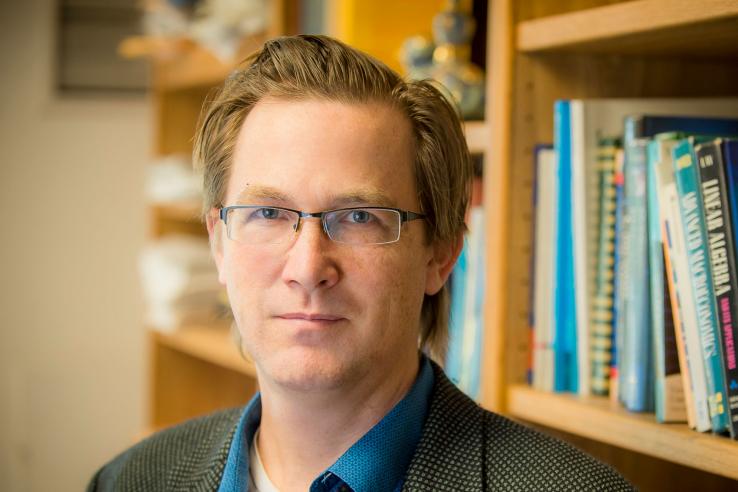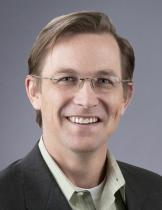Affiliate Spotlight: Craig McIntosh on engines for economic mobility

Craig McIntosh is a professor of economics in the international relations school at the University of California, San Diego and Co-Chair of J-PAL’s Agriculture sector. He has been a J-PAL affiliate since 2013.
How did you become interested in development economics?
I was a high school exchange student in Nakuru, Kenya for a year in the late eighties. Every one of my brothers, uncles, and cousins in my host family was a mechanic, and so I saw the challenges they faced in starting and maintaining small businesses. I became fascinated by the role of credit and how they accessed the liquidity needed to operate those relatively capital-intensive repair and auto body shops. The ways in which these informal jua kali businesses can serve as engines for economic mobility remains one of the most interesting puzzles for me in development economics.
What is a current research project that you're particularly excited about?
Together with Lauren Bergquist (University of Michigan), I’ve been working for the past three years to build and evaluate a digital grain trading platform in Uganda. We’re trying to understand what dimensions of inefficiency and market power can be wrung out of the system by deepening information and allowing farmers to contract more directly with large buyers.
It has been a very exciting project in that it is an attempt to run an RCT at sufficient scale as to be able to affect general equilibrium outcomes like local market prices. We are just wrapping the project up with a set of lab-in-the-field experiments to try to nail down the ways in which changes in search costs shift the travel decisions of traders and the bargaining equilibria that emerge between traders and farmers.
What is your "dream evaluation"? (It doesn't have to be feasible!)
Sarah Baird (George Washington University), Aislinn Bohren (University of Pennsylvania), Berk Özler (World Bank), and I have worked on a number of empirical and theoretical papers trying to use experimental methods to measure spillover and threshold effects—to see what happens when an intervention has broad impacts on a population beyond those who are direct participants. In the end, however, all the projects in which we’ve used these techniques in the field have turned out not to feature strong spillover effects!
Many of the most obvious applications of these techniques are in public health, where phenomena like herd immunity (when enough people in a community are vaccinated or otherwise immune to a disease that it stops spreading) are common. I’m always on the lookout for the opportunity to run a two-level randomized evaluation on interventions such as vaccinations or anti-malarial bednets where we would have an opportunity to observe a true epidemiological threshold empirically—in other words, we would be able to see exactly how many people in a community need to be vaccinated in order to stop a disease from spreading.
It would be particularly interesting to test for these thresholds in environments where individuals in a community understand the nature of the problem (such as the point at which measles vaccinations generate herd immunity), so you’d be able to observe whether people decide to get immunized (or not) based on the nature of herd immunity, what we as researchers call strategic compliance (or non-compliance) with the treatment triggered by spillover effects.
What is one particularly memorable story from a field research project?
I did aid work with the International Rescue Committee in Bu’aale, Somalia in 1993–94. We flew in 1,000 baby chickens from Nairobi and fed them to the point where they were ready start laying eggs. We then distributed them to mothers in the community so they could provide a steady stream of protein for their kids.
Almost across the board, these chickens were killed and eaten as soon as they were received, with the parents telling us that the only way they could ensure the nutrition would get to their kids was to slaughter the chickens before someone else tried to take them. It is a lesson that has stuck with me: physical security is a precondition for thinking about longer-term outcomes.
Do you have any advice for early career researchers? What do you wish you'd known when you started out?
You have to work on projects you are passionate about, and there is such a thing as being too strategic in picking collaborations. The great luxury of research is that you can choose projects because they are interesting to you! My graduate school advisors, Alain de Janvry (University of California, Berkeley) and Elisabeth Sadoulet (University of California, Berkeley), were inspiring mentors in showing that a policy focus can cohabit perfectly well with a career as an academic.
What are you reading now (related or unrelated to economics)?
Professionally, John Mellor’s book on the Agricultural Transformation, Agricultural Development and Economic Transformation: Promoting Growth with Poverty Reduction. Personally, Agatha Christie’s Hercule Poirot stories and the poetry of Robinson Jeffers, and with the kids, Calvin and Hobbes.
Any other news you'd like to share?
The past month has been an exciting one for my co-author Andrew Zeitlin (Georgetown University) and me, as the working paper for the first of our benchmarking studies from Rwanda was released mid-September. These studies compare standard USAID interventions to direct cash transfers equivalent to the cost of the interventions. The study got a pre-release teaser from the New York Times, a strong pro-cash slant from Vox and Quartz, and an official "dis" from USAID on NPR.
The experience has been a reminder that while we strive to take a dispassionate and neutral stance as evaluators, these studies have real repercussions for the institutions involved and their use of results is inevitably motivated by these incentives. Andrew and I presented our take on the study on the World Bank Development Impact blog. We hope that this study can be a building block in a conversation about how to use two-armed comparative studies to deepen what we learn in measuring development cost-effectiveness.
